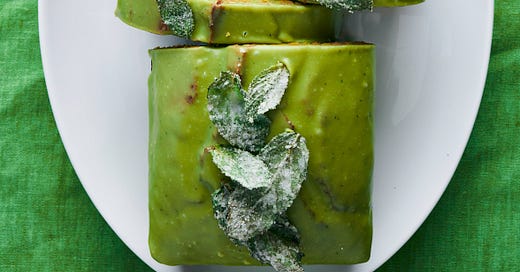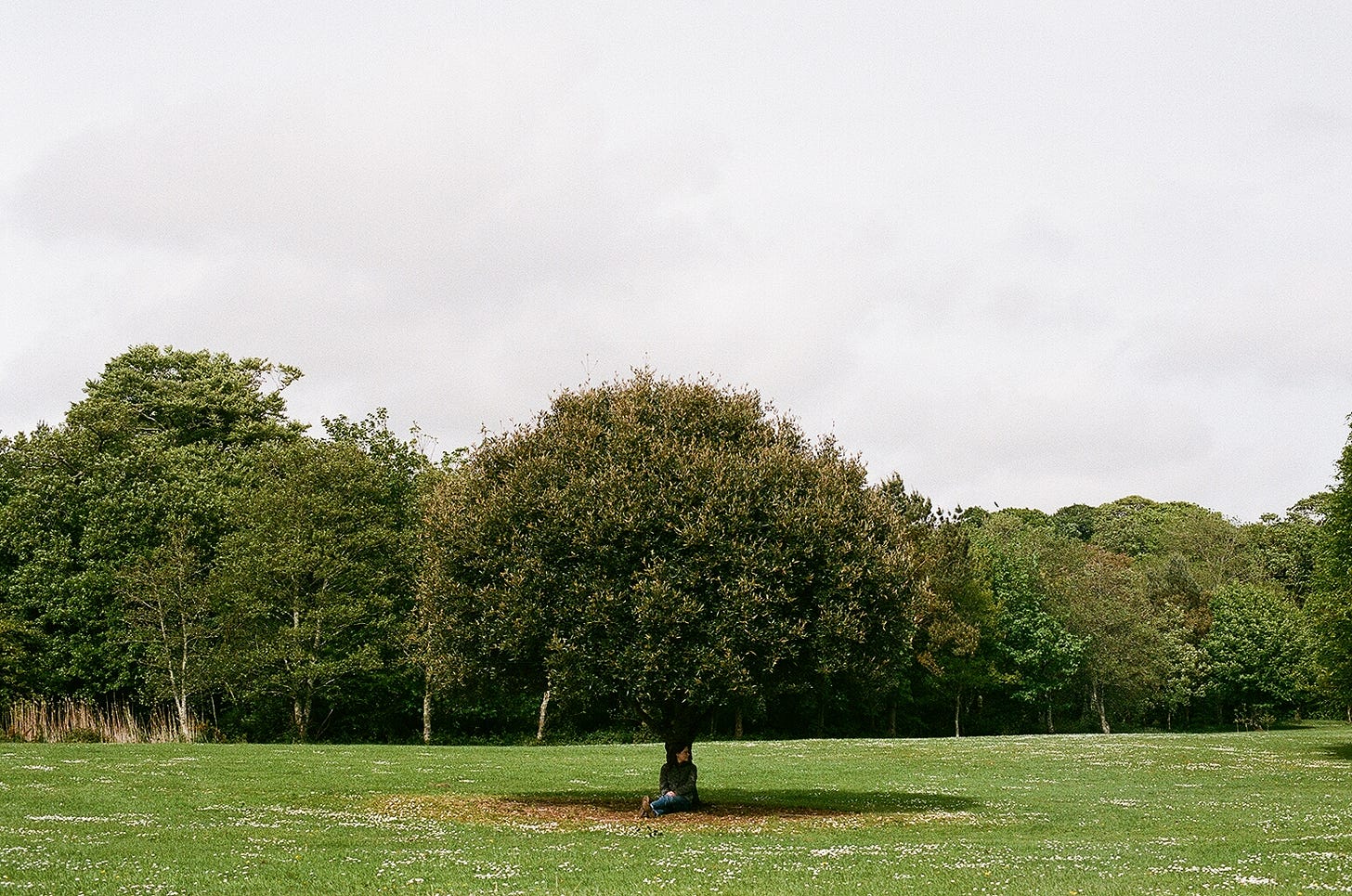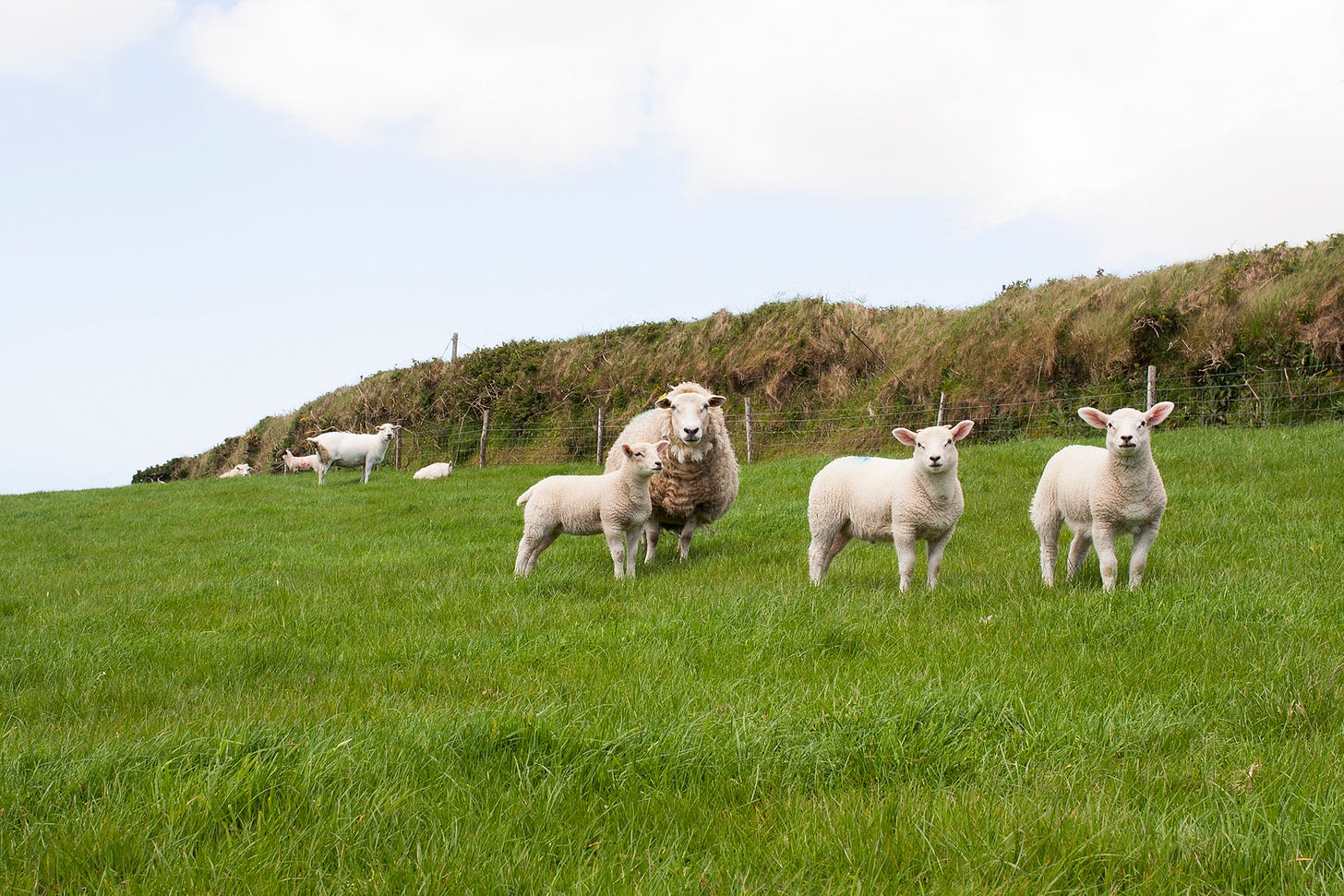Naturally Green St. Patrick's
how to make the greenest pesto and (early access!) matcha-lime teacake
My favorite color to eat is green. To me, green tastes fresh, vibrant, full of life. You can find green foods year-round, but right now on the cusp of spring is when they seem particularly welcome. Little shining beacons of promise.
It’s only fitting, then, that St. Patrick’s Day falls when it does, today on March 17th. Graham and I honeymooned in Ireland, and I remember being awestruck by the sheer greenness of the country. Everywhere you look, you see green. The grass-covered hills, the leafy trees hanging over narrow roads, forming an umbrella of green. You’d have no trouble believing that there are leprechauns hiding among the fields of clover.
We ate exceptionally well on our Irish honeymoon—a fact that confounds and surprises many people. The hearty loaves of brown bread, spread thickly with salted butter. The smoked fish, oh my goodness, I’ve never tasted any better. The pints of Guinness we drank in tiny pubs while perched on creaky wooden stools (usually with a side of fries to share). I didn’t think I liked Guinness until I tried it in Ireland, where it must just be fresher and more delicious. I wish I could give you a slice of the most perfect layer cake we ate at Ballymaloe.
Traditional Irish foods don’t tend to be naturally green, however. To celebrate St. Patrick’s this year, you could have a little fun by leaning into the color theme of the holiday and cooking an all-green menu. Focusing on color is such a creative way to go about party planning. When I was developing the recipes for my new book, Cook Color (coming May 16th! Pre-order now!), I decided to challenge myself by avoiding artificial food coloring. Who needs chemical dyes when beets are already a rich magenta and purple potatoes look like the starry midnight sky?
Green foods might arguably be the most abundant of all the colors; green pigment (aka chlorophyll) is, of course, found in every growing plant. One of the tricks to cooking spectacular green foods is pushing beyond the obvious or expected. Take a green leafy salad. How can you make it even more green? You might start by adding fresh herb leaves—toss them into the bowl whole or torn into bite-size pieces, as if they too are lettuce greens. I love the surprise of coming across small mint leaves and ribbons of basil in a salad. If you’d like to enhance the green color of the salad dressing, consider mixing in fresh herbs. Chlorophyll is oil-soluble, meaning the color will be drawn out in the presence of oil rather than water. You’ll need to chop the herbs or, even better, pound them with a mortar and pestle to release the pigment.
Speaking of pounded and crushed herbs, here’s how to make the greenest pesto: Toast a large handful of pine nuts in a small, dry skillet over medium-low heat until golden brown. Transfer them to a food processor, add a peeled garlic clove or two, and pulse until the nuts are completely broken down and the garlic is finely chopped. Drizzle in ½ cup of good-quality olive oil and blend to incorporate. Add the leaves of one big bunch of basil. Pulse until the basil combines with the ground nuts and oil and dyes everything vibrantly grass-green. Use a rubber spatula to scrape down the sides of the food processor, then drizzle in ¼ cup more olive oil while blending. Be careful not to over-mix, which can cause the pesto to shift toward a brownish hue. (A dull blade will also create a brown-green color because it bruises rather than slices the herb.) By hand, stir in two handfuls of grated Parmigiano-Reggiano plus a big pinch or two of fine salt. I’m always tempted to add lemon juice, but then I remember that it can dull the color. Better to mix in a very tiny splash of white wine vinegar if you feel the pesto needs to be perked up by acidity. Pesto is wonderful on pasta, obviously, but also very much at home spooned over roasted meats, fish, and vegetables. I like it spread on sandwich bread and I love it with soft-cooked eggs. You can always thin pesto with a little more oil or pasta-cooking water as needed.
Now for the best part: pesto variations. Leave out the pine nuts and cheese and you’ll have what the French call pistou. Or try swapping pistachios for pine nuts and mint for basil. Actually, you can use almost any fresh herb or tender green you like. Those who love cilantro should definitely try making a green sauce without any nuts and perhaps some green onion instead of garlic. One final tip for the greenest pesto: When you add the basil leaves, toss in some fresh spinach as well. The spinach pumps up the green color a little bit. I think I learned this trick from Bay Cities Deli in Santa Monica, California.
Last but not least, there’s a gorgeous green dessert recipe in Cook Color that you can get early access to (along with two other sweet recipes!) if you pre-order the book. Matcha-Lime Teacake with Candied Mint looks spectacular but is simple to make. You will be amazed by the way matcha, lime, and mint flavors harmonize. To instantly download all three recipes plus my best tips for hosting three different color-focused parties, pre-order the cookbook and enter your details here.
Thank you so much for reading Recipe of the Month! Wishing you lots of luck and delicious green foods. See you next week!
xo,
Maria








